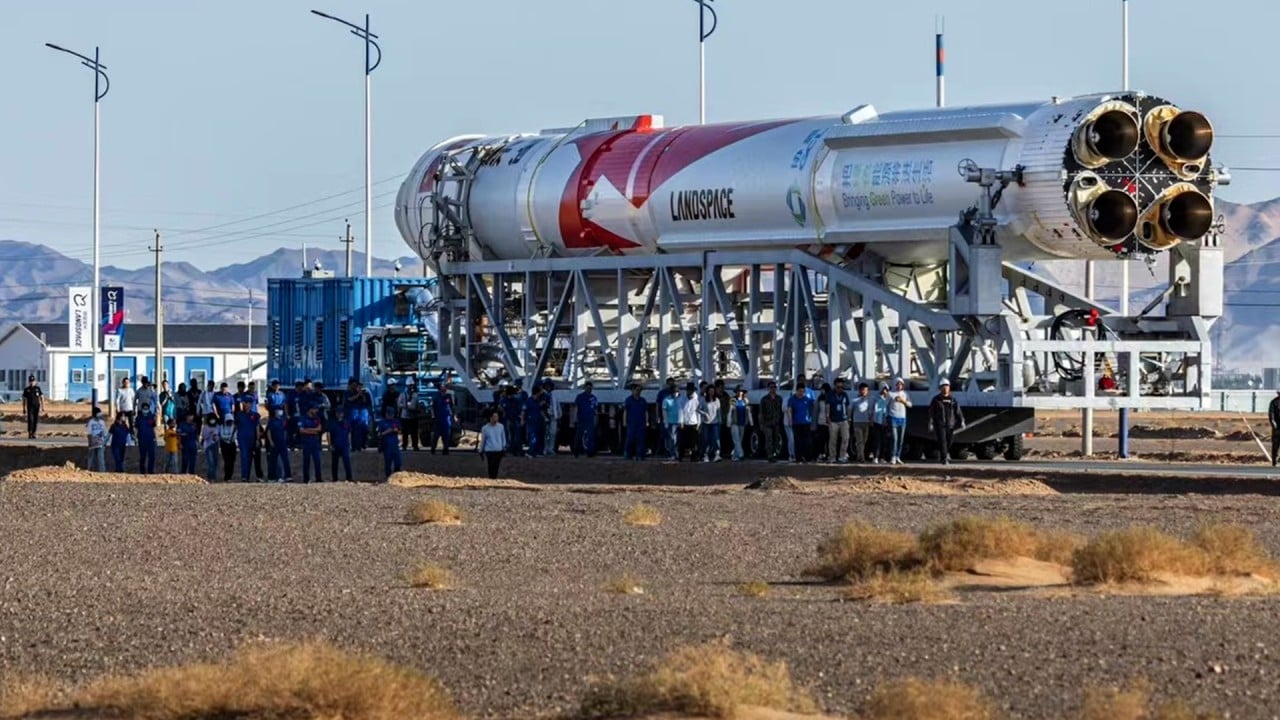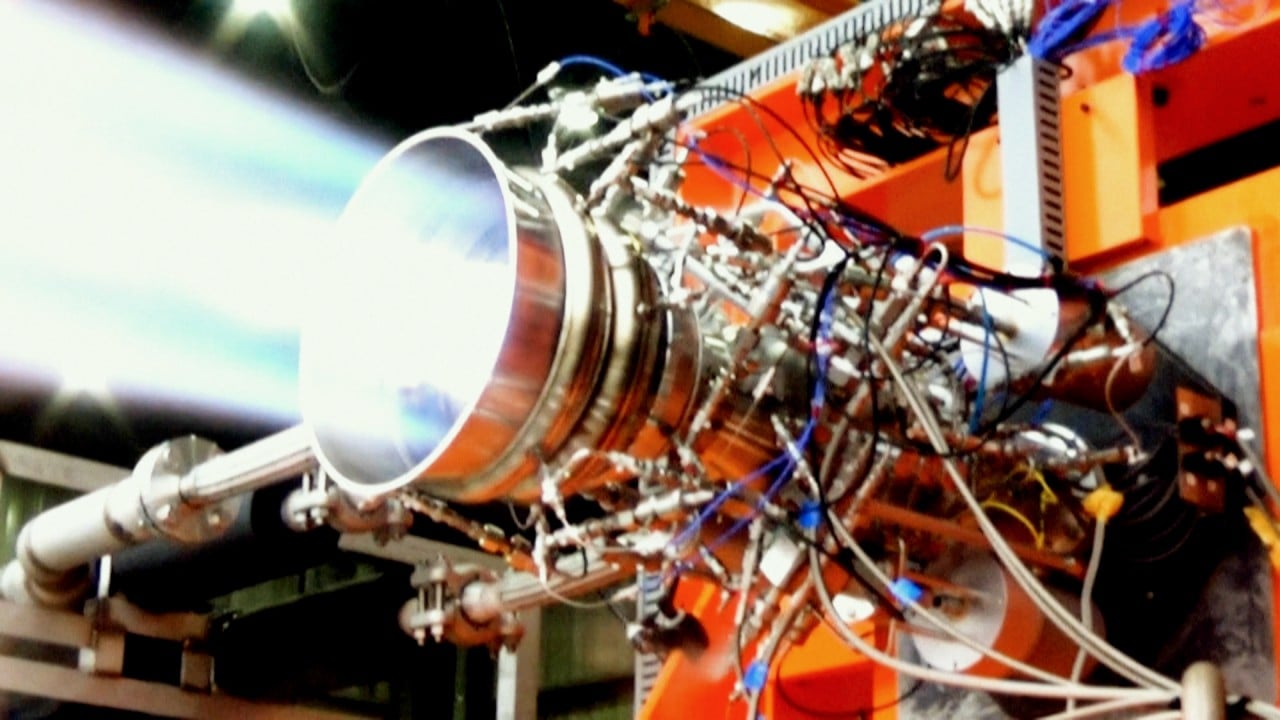
Chinese firm launches world’s most powerful solid-fuel rocket in coup for private aerospace sector
- OrienSpace launches mammoth solid-fuel rocket from a ship off Haiyang in Shandong province
- Chinese aerospace media reports Gravity-1 launch is ‘a significant advancement in the independent innovation of China’s commercial carrier rockets’
A private aerospace enterprise in China launched the world’s most powerful solid-fuel rocket from a ship near the coast of Haiyang in Shandong province on Thursday, sending three weather satellites into orbit.
While China’s private aerospace sector has been growing rapidly, most of its commercial rockets carry relatively light loads.
However, the Gravity-1 rocket developed by OrienSpace has a thrust of 600 tonnes and can lift 6.5 tonnes of cargo into near Earth orbit. The rocket’s cargo compartment – 4.2 metres in diameter and 9 metres tall (13.7 by 30 feet) – is spacious enough to accommodate cargo for China’s space station if necessary.
It is nearly twice as heavy as the European Space Agency’s Vega-C, the previous record holder.
In its market of batch networking launches of low and medium-orbit satellites, the Gravity-1 rocket can support the launch of up to 30 satellites weighing 100kg (220lbs) each, according to the official Aerospace China newspaper.
For exceptional clients such as the Chinese military, it can even launch satellites within 24 hours of receiving a request.
Aerospace China said the successful first flight “marks a significant advancement in the independent innovation of China’s commercial carrier rockets”.
China’s new aerospace programme in price war on SpaceX reusable rockets
Commercial aerospace firms that have sprung up like mushrooms in recent years bear China’s hopes of winning the new space race.
However, the scale of these companies is still small compared to SpaceX, and there is considerable uncertainty about whether they can develop the technical capability and commercial efficiency that can compete with the US.
OrienSpace has not disclosed the cost of its first launch, but chief operating officer Wei Kai said the company had adopted a series of measures to establish a large-scale, convenient and low-cost launch service model.
Its factory in Haiyang will achieve an annual production capacity of 20 rockets, he said.
The use of solid fuel, which is convenient and safe, allows for the process of rocket assembly, testing and launch to be completed within a 5km radius, significantly reducing production time and cost.
Offshore launches offer additional advantages in terms of safety and frequency of launches, with the potential for weekly launch missions using a single vessel, according to the company.
Wei told Aerospace China the Gravity-1 rocket structure was designed for rapid mass production. Its core and boosters have the same diameter, simplifying the manufacturing process and significantly improving manufacturing efficiency while cutting production costs.
Chief designer Bu Xiangwei said the firm’s improvements – such as enclosing the rocket in a white protective cover before transport and launch – had saved considerable costs.
SpaceX rival: China’s LandSpace sets ‘challenging’ reusable rocket targets
The flexible cover kept the rocket’s temperature at around 15 degrees Celsius in winter and isolated external rain and snow.
“Through such an inflatable protective cover, we can achieve a low-cost and simplified environmental support system for carrier rockets,” Bu said, according to Aerospace China.
The Gravity-1 consists of seven solid rocket motors. The bundling and separation of large solid rocket boosters has been a challenge around the world.
“The juncture where the rocket booster meets the core stage, no larger than an A4 sheet of paper, must endure a force of roughly 200 tonnes,” said Yao Song, the co-CEO of OrienSpace.
“Its strength must be matched also by its simplicity, ensuring a clean break when the time comes.
“This, indeed, showcases the depth of our technological expertise.”
Behind this feat stands a team of about 100 scientists and engineers who spent about three years carrying out 23 large-scale ground tests of the rocket system, 489 tests of individual components and 1,452 iteration tests to improve the rocket’s overall performance.
OrienSpace said it aimed to achieve liquid rocket recyclability and reusability within two years, increasing its carrying capacity to 15-20 tonnes and further driving down costs.



